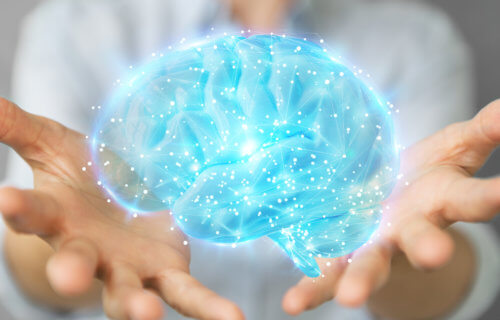LOS ANGELES — How old is your brain, really? Just like people who look older than they really are, scientists say a person’s brain can age faster than the rest of their body. With that in mind, researchers at USC have created an artificial intelligence program which can accurately tell how old someone’s brain is — while also pointing out warning signs for Alzheimer’s disease.
The AI program analyzes MRI brain scans, looking for signs of cognitive decline which have a link to neurodegenerative diseases, like Alzheimer’s. Brain aging is one of the most reliable markers for neurodegenerative disease risk. This is actually more useful than simply looking at a patient’s chronological age (their birthdate).
Researchers note that a patient’s risk increases when their brain displays characteristics which are “older” than you would expect to see in a person of that age. Artificial intelligence was able to detect these markers that are typically difficult to spot and link to cognitive decline.
“Our study harnesses the power of deep learning to identify areas of the brain that are aging in ways that reflect a cognitive decline that may lead to Alzheimer’s,” says corresponding author Andrei Irimia, assistant professor of gerontology, biomedical engineering, quantitative & computational biology and neuroscience at the USC Leonard Davis School of Gerontology, in a media release.
“People age at different rates, and so do tissue types in the body. We know this colloquially when we say, ‘So-and-so is forty, but looks thirty. The same idea applies to the brain. The brain of a forty-year-old may look as ‘young’ as the brain of a thirty-year-old, or it may look as ‘old’ as that of a sixty-year-old.”
The AI system can estimate brain age to within 2 years
Irimia’s team gathered brain MRI scans from 4,681 cognitively normal participants during their project. Some of these individuals went on to develop cognitive impairment, while others had a full-blown case of Alzheimer’s later in life.
They fed this data into an AI model called a “neural network,” where it went to work estimating each person’s age based on their brain scans. To do this, researchers first had to train the machine to produce detailed anatomic brain maps which reveal patient-specific characteristics of aging.
The team then compared each person’s biological brain age with their actual chronological age. The greater the difference between these two numbers, the worse a participant’s cognitive score was — increasing the risk for Alzheimer’s.
The new AI program was able to estimate brain age to with 2.3 years of a healthy patient’s chronological age. That’s one year closer than current medical tests which estimate brain age. The team believes this is a good sign that AI can accurately find people with faster-aging brain at risk of serious disease.
“Interpretable AI can become a powerful tool for assessing the risk for Alzheimer’s and other neurocognitive diseases,” says Irimia, who is also a member of the USC Viterbi School of Engineering and USC Dornsife College of Letters, Arts and Sciences.
“The earlier we can identify people at high risk for Alzheimer’s disease, the earlier clinicians can intervene with treatment options, monitoring, and disease management. What makes AI especially powerful is its ability to pick up on subtle and complex features of aging that other methods cannot and that are key in identifying a person’s risk many years before they develop the condition.”
Men show more signs of brain aging
Interestingly, the AI program found that certain parts of the brain aged faster in men than they did in women, and vice versa.
However, men were more likely to experience faster brain aging in the motor cortex — the region responsible for motor function. This didn’t surprise scientists, since men are at higher risker for Parkinson’s disease, a neurodegenerative disease which leads to motor impairment over time.
The study also found that brain aging in the right hemisphere of the brain is relatively slower among women. That may come as a surprise to some, as a recent study found that older women undergo certain biological changes which put them at a higher risk of developing Alzheimer’s — the most common form of dementia.
Overall, 6.5 million Americans deal with Alzheimer’s. Governments are just starting to approve medications which may stop or prevent cognitive decline, but there is still no definitive cure for the disease.
“One of the most important applications of our work is its potential to pave the way for tailored interventions that address the unique aging patterns of every individual,” Irimia concludes.
“Many people would be interested in knowing their true rate of aging. The information could give us hints about different lifestyle changes or interventions that a person could adopt to improve their overall health and well-being. Our methods could be used to design patient-centered treatment plans and personalized maps of brain aging that may be of interest to people with different health needs and goals.”
The findings are published in the journal Proceedings of the National Academy of Sciences.
